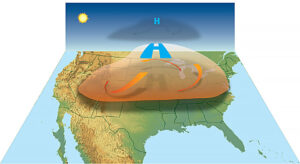We are constantly being reminded to wash our hands often, especially during the cold and flu season. Aerosolized virus-containing droplets are expelled during a cough or sneeze and the droplets may land on surfaces we touch on a daily basis, such as doorknobs. Anyone who touches those surfaces then touches his or her nose or mouth, risks being infected. Also, people who put their hands over their mouths when coughing or sneezing, then shake hands, or touch objects, are spreading the virus.
Washing our hands regularly helps prevent the transmission of disease caused by these pathogens. However, when soap and water are not available, hand sanitizer is the next best preventative measure.
When you wash your hands, you are not killing the germs on your hand, you are simply removing them from your skin. Soap, which is a surfactant, reduces the surface tension on the skin, making it easier for the running water to dislodge the molecules of those nasties on your hands.
Anti-bacterial soap has been proven no more effective than using regular soap because the anti-bacterial soap does not destroy or inactivate the majority of pathogens. One ingredient in anti-bacterial soap, Triclosan, has been banned because it was being absorbed into the skin. There is also a growing concern that the use of anti-bacterial products is contributing to the growing number of drug-resistant bacteria.
Alcohol-based hand sanitizers are effective against a limited range of pathogens. They are not effective against the following pathogens: the Norovirus, which is very common on cruise ships; HPV (Human Papillomavirus), which may be spread through non-sexual contact; E-coli; Staphylococcus epidermidis; Giardia, a microscopic parasite; Clostridium difficile; Poliovirus; MRSA (methicillin-resistant staphylococcus aureus (flesh-eating bacterium); Salmonella; and Pseudomonas aerginosa.
Hand sanitizers are effective against fungi and enveloped viruses, such as those that cause colds and flu, including the Coronavirus.
To be effective, a hand sanitizer must contain at least 60% ethyl alcohol and must be used properly. Apply a liberal amount (follow directions on the bottle), work it into your hands, between fingers, under the fingernails, rub gently, and let it dry. You should not wipe your hands on something else to dry them, such as your clothes, since you may contaminate your hands. Do not use hand sanitizers if your hands are dirty, it will not be effective and just create a slurry. Hand sanitizers do not remove or inactive chemicals on your skin.
Alcohol can dry out your skin, so look for a sanitizer that contains ingredients to soften your skin, such as aloe vera.
A study published in the journal, “Pediatrics,” found that young kids were less likely to get sick and miss daycare when they used hand sanitizer compared to when they washed their hands. This raises questions about the efficacy of hand sanitizers versus soap and water. However, it is theorized, because it is often easier to use a hand sanitizer, people may be more likely to use it and use it more often than using soap and water. Remember: wash your hands regularly with soap and water for at least 20 seconds. If that is not available, by all means, use a hand sanitizer.










